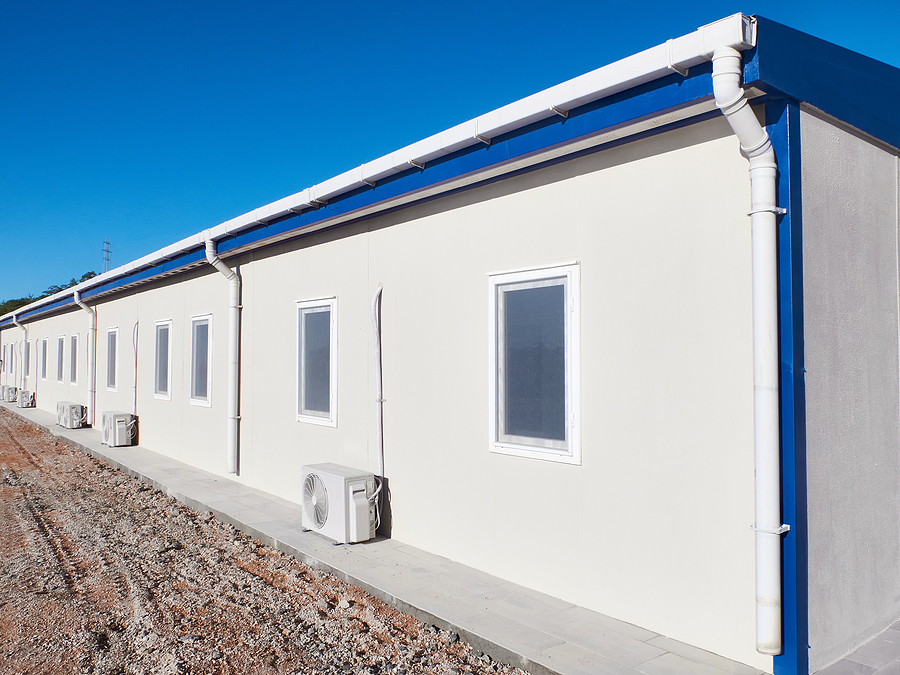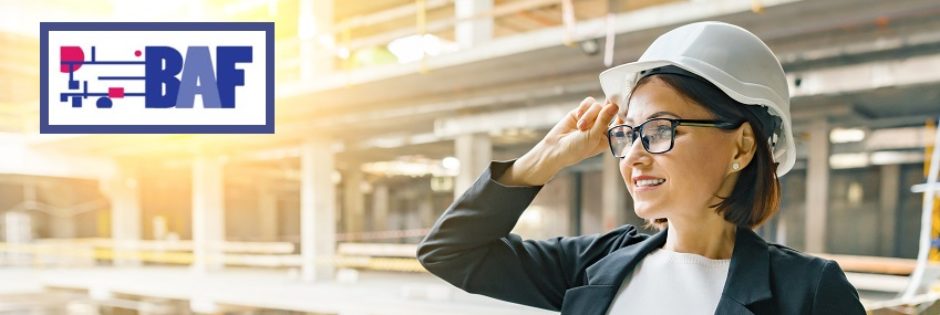Building a new commercial space is a significant undertaking, involving major investments in time and money. Delays and budget overruns are common, creating stress for business owners and developers. Modular construction offers a compelling alternative to traditional building methods, addressing many of these common pain points with an efficient and predictable process.
This post will explore the world of prefabricated buildings, often called prefab construction. We will examine the key benefits that make it an attractive option for commercial projects, from significant cost and time savings to superior quality control. We’ll look at real-world examples, discuss potential challenges, and explore future commercial construction trends. By the end, you’ll have a clear understanding of whether modular construction is the right fit for your next project.

What is Modular Construction?
Modular construction is a process where a building is constructed off-site in a controlled factory environment. Individual sections, or “modules,” are built simultaneously and then transported to the construction site. Once there, they are assembled to form a complete structure. This method contrasts sharply with traditional construction, where the entire building is built on-location, piece by piece, exposed to the elements.
This off-site approach, also known as prefab construction, allows for a more streamlined and efficient building process. Think of it like an assembly line for buildings. Because the modules are built indoors, weather delays are eliminated, and quality can be monitored at every stage. This level of control and predictability is one of the primary reasons it’s becoming a leading choice for commercial construction firms and developers.
The Benefits of Modular Construction
For commercial real estate developers and business owners, the advantages of modular construction are substantial. It provides a faster, more cost-effective, and sustainable way to build, without sacrificing quality or design.
Cost Savings
One of the most significant draws of modular construction is the potential for cost savings. Building in a factory setting minimizes waste, reduces labor hours, and allows for bulk purchasing of materials, all of which contribute to a lower overall project cost. The controlled environment also reduces the risk of expensive on-site errors and weather-related damage that can plague traditional projects.
Time Efficiency
Speed is a critical factor in commercial construction. The sooner a building is operational, the sooner it can start generating revenue. Modular construction can dramatically shorten project timelines. A report from McGraw Hill Construction found that this method can reduce construction time by 30-50% compared to traditional builds. The Modular Building Institute also notes that over 30% of permanent modular construction projects are completed in three months or less. This speed is possible because site preparation can happen at the same time the modules are being built in the factory.
Quality Control
Building in a factory provides a level of quality control that is difficult to achieve on a traditional construction site. Each module is built to precise specifications under the watchful eye of quality assurance experts. This ensures that every component meets rigorous standards before it ever leaves the factory. The result is a consistently high-quality final product, from sturdy metal buildings to complex multi-story structures.
Environmental Benefits
Sustainability is an increasingly important consideration in commercial construction. Modular construction is an inherently greener process. The factory setting allows for more efficient use of materials, significantly reducing waste. Any leftover materials can often be recycled or reused for other projects. Furthermore, the condensed on-site construction time means less disruption to the surrounding environment, with reduced noise and air pollution.
Design Flexibility
A common misconception about prefabricated buildings is that they are all uniform and lack aesthetic appeal. This couldn’t be further from the truth. Modern modular construction offers incredible design flexibility, allowing architects to create unique and sophisticated buildings that can be customized to fit any brand’s identity. From sleek finishes to complex layouts, modular design can accommodate a wide range of architectural styles.
Book a Construction Consultation Today! ✏
Real-World Examples of Modular Success
Modular construction is already being used across various commercial sectors with impressive results.
- Hotels: The trendy CitizenM hotel chain is a prime example. It uses modular construction to build stylish, high-quality hotels in dense urban areas quickly, allowing for rapid expansion into new markets.
- Student Housing: Universities facing housing shortages have turned to modular solutions to rapidly build new dormitories, providing much-needed accommodation for students without the lengthy timeline of traditional construction.
- Healthcare Facilities: Hospitals and clinics are using prefabricated buildings to add new wings, specialized treatment units, and emergency care facilities. This allows them to expand their services and respond to community needs much faster.
- Retail Spaces: The flexibility of modular design makes it perfect for retail. Brands use it to create pop-up shops, temporary storefronts, and even permanent retail locations that can be set up quickly to capitalize on market opportunities.
Challenges and Considerations
While modular construction offers many advantages, it’s important to be aware of the potential challenges.
- Transportation Limitations: Modules must be transported from the factory to the site, which means they are subject to size and weight restrictions. This can sometimes impact the design.
- Initial Design Investment: The modular process requires detailed planning and design decisions to be finalized upfront. Changes made later in the process can be costly and cause delays.
- Code Compliance: Navigating local building codes can be complex, as some regulations may not be tailored to modular methods. Working with an experienced commercial construction firm is crucial.
- Public Perception: Some people still hold outdated views about the quality of “prefab” buildings. Educating stakeholders and the public about the high standards of modern modular construction is often necessary.
- Coordination and Logistics: A successful modular project requires precise coordination between the factory, transportation providers, and on-site assembly crews.
In Summary
Modular construction is more than just a passing trend; it represents the future of the industry. As technology continues to advance, we can expect to see even greater innovations. Future trends include the integration of smart technology directly into modules, increased use of sustainable and recycled materials, and advances in robotics to further automate the building process. Governments are also beginning to recognize the benefits, with some offering support and incentives for modular projects.
If you are a developer or business owner looking for a smarter, faster, and more cost-effective way to build, modular construction deserves your serious consideration. The benefits of speed, quality, and sustainability make it a powerful choice for your next commercial project.
Ready to explore how modular construction can benefit your business? Contact our team to schedule a consultation. We can help you navigate the process and bring your vision to life with the efficiency and quality of modern prefab construction.
Related Post: The Future of Prefabricated Building: Exploring Modular Construction

